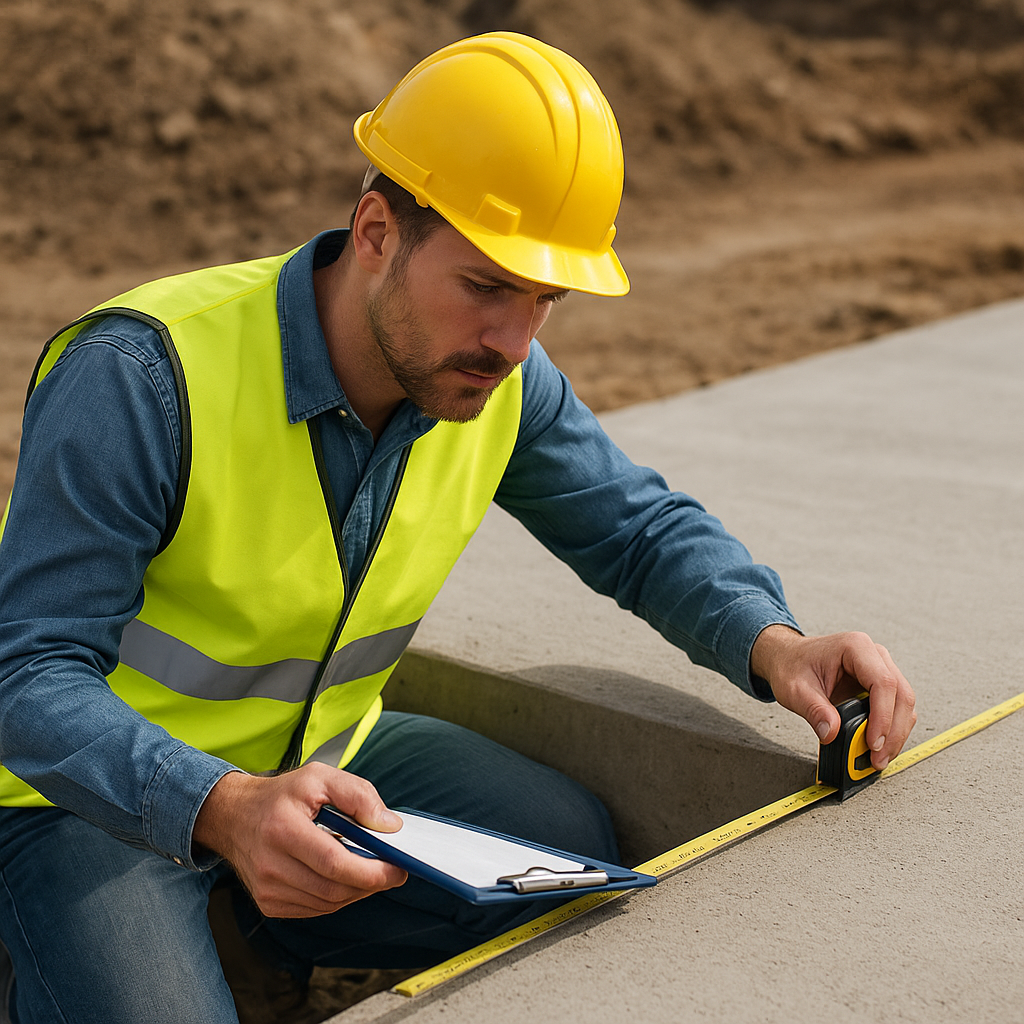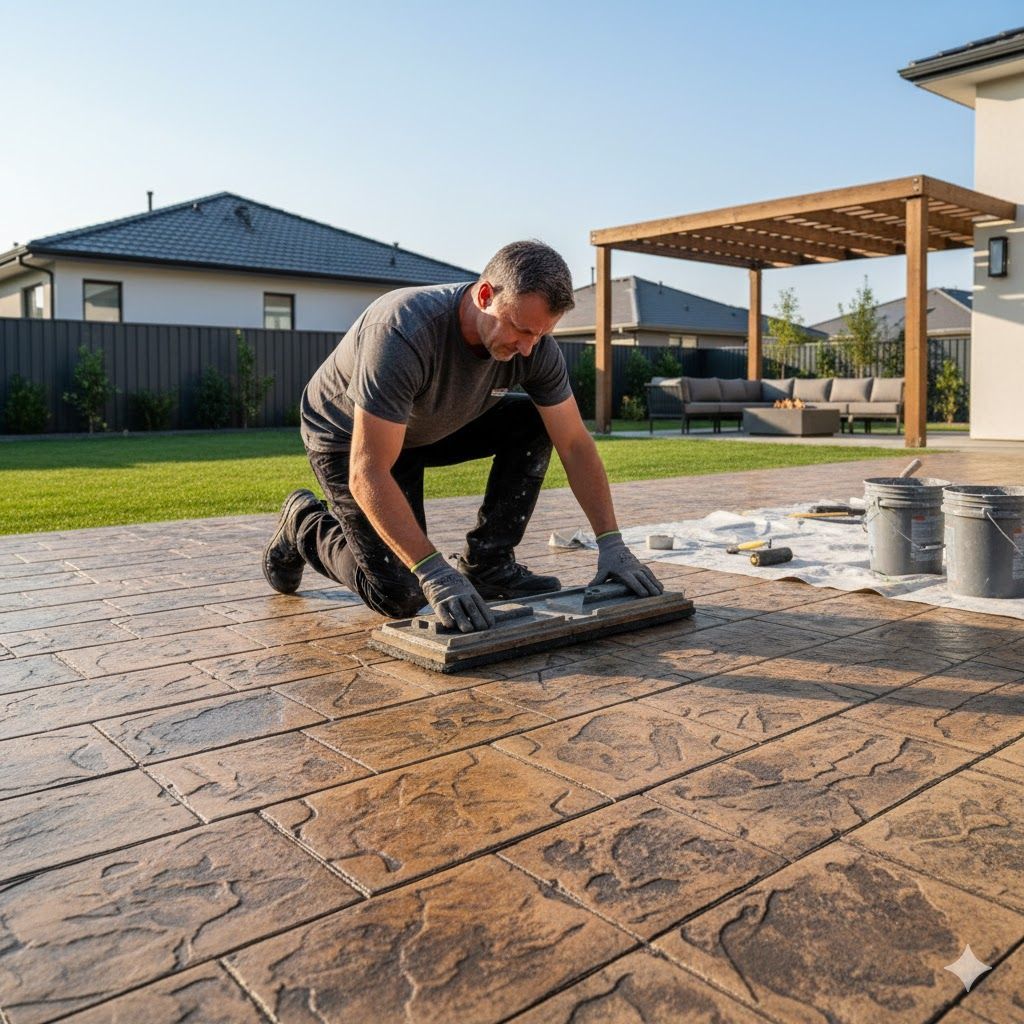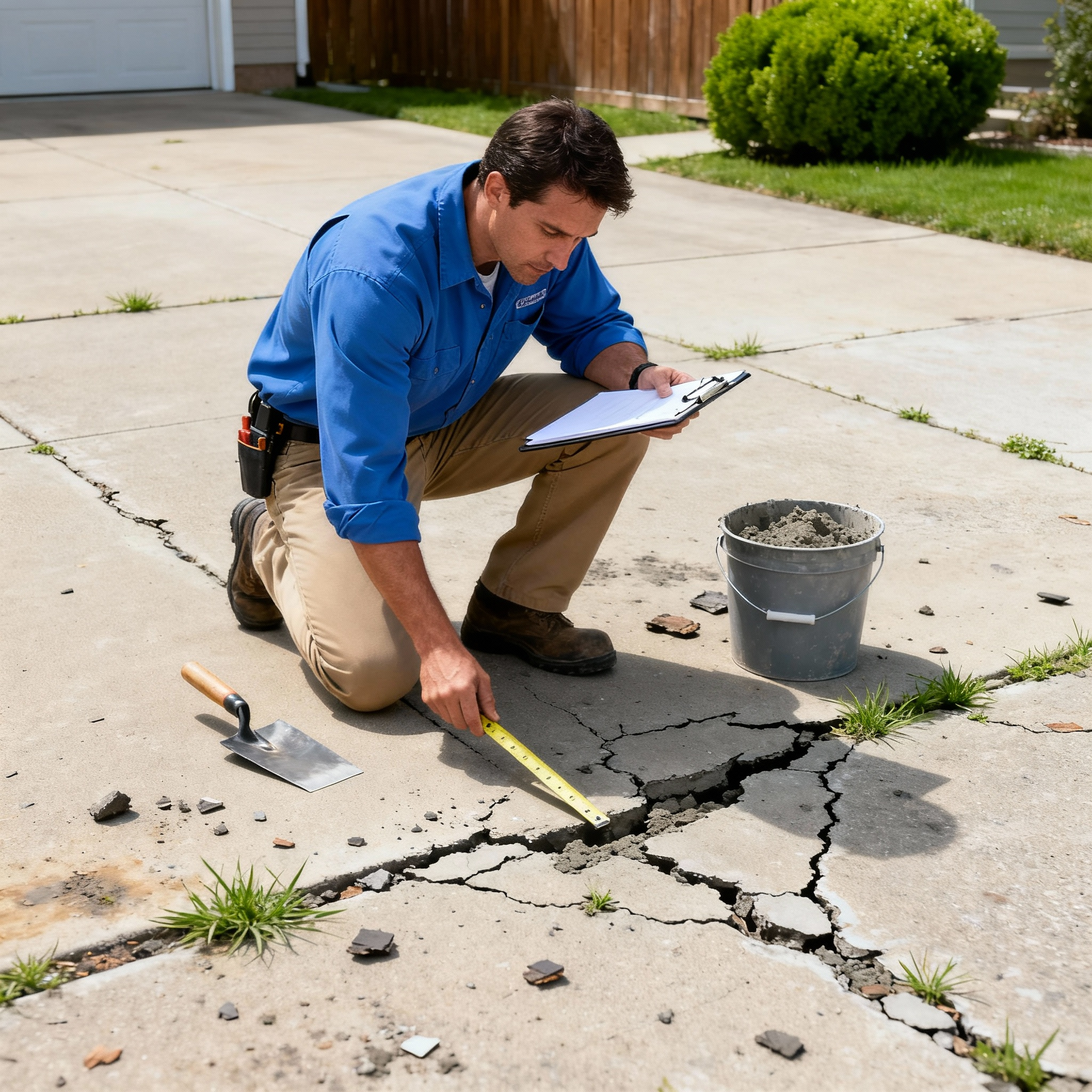Embarking on a concrete project—whether it's installing a beautiful stamped concrete patio, pouring a new driveway, or tackling a critical foundation repair—is a significant investment in your home. These projects promise durability, functionality, and increased curb appeal. However, without proper planning and preparation, even the most straightforward construction job can quickly turn into a source of stress, unexpected costs, and unwelcome delays.
As a homeowner, your primary goal is a smooth, efficient process that stays on schedule and budget. The key to achieving this lies almost entirely in the preparation phase. By taking proactive steps before the first piece of old concrete is removed, you can clear the path for your contractor and protect your property.
This guide breaks down the essential pre-work into five clear steps, ensuring you are fully prepared for your next concrete project so you don’t encounter any major surprises or accidents.
Step 1: Finalize Your Design and Contractor Agreement
The foundation of a successful concrete project isn't the concrete itself; it's the paperwork. Before any work begins, you must have a clear vision and a legally sound agreement with your contractor.
Define the Scope of the Concrete Project
Work closely with your chosen contractor to define every detail. Be specific:
- Type of Concrete: Is it standard broom-finish, or a decorative finish like stamped concrete? (Internal Link Recommendation: Stamped Concrete Service in Mankato, MN)
- Dimensions and Location: Mark out the exact boundaries of the work area, especially if it is near property lines, fences, or existing structures.
- Finish and Color: If applicable, finalize the specific pattern, color, and sealants. Any changes made once the work begins will result in a costly "change order."
- Function: If it’s a concrete driveway or heavy-duty slab, confirm the concrete mix's PSI (strength) is adequate for its intended use. (Internal Link Recommendation: Concrete Installation in Mankato, MN)
Review and Understand the Contract
Your contract should be detailed and explicit. Ensure it covers:
- Payment Schedule: Clear milestones for payment. Never pay for the entire project upfront.
- Timeline: Agreed-upon start and estimated completion dates, including cure time.
- Contingency: A plan for dealing with unforeseen issues (e.g., discovering old foundation issues, tree roots, or unexpected underground utilities).
Statistic: In the broader home renovation sector, up to 70% of projects report encountering unexpected change orders, often resulting in significant cost overruns—a clear signal that preparation in the design and contractual phase is vital to maintaining your concrete project budget.
Long Tail Keywords to Target: concrete project checklist for homeowners, how to avoid concrete installation delays, pre-work for a concrete patio, finalizing a stamped concrete design
Step 2: Obtain Necessary Permits and Mark Utilities
This step is critical for avoiding legal issues and, more importantly, life-threatening accidents.
Secure All Necessary Permits
Any outdoor concrete project that involves modifying the structure of your property, expanding an existing structure, or changing drainage patterns likely requires a permit from your local municipality.
- Who is Responsible? While a professional contractor will often handle the permit process, confirm this in your contract. You, the homeowner, are ultimately responsible for ensuring all work is compliant with local codes.
- Drainage Plan: Be prepared to submit a plan showing how water will drain off the new surface. Improper drainage can lead to water pooling, which erodes soil and damages nearby structures, including your foundation.
Call Before You Dig: Utility Location
The number one rule in any excavation for a concrete project is to identify all underground utility lines.
- Call 811: This national call-before-you-dig number connects you to a local service that will mark all underground public utilities (gas, water, electric, cable) on your property—for free.
- Private Lines: Note that 811 typically does not mark private lines (like sprinkler systems, septic lines, invisible dog fences, or power lines running to a detached garage). You and your contractor must locate these.
Semantic Keywords: concrete pouring permits, utility marking for construction, property line rules for concrete, home improvement codes
Step 3: Clear the Work Zone and Create a Safety Buffer
The work zone is the immediate area where the concrete project will take place. The safety buffer is the surrounding area that needs protection. Taking time to move items prevents damage and gives your crew a clean, safe area to work.
Clear and Protect the Work Zone
- Remove All Obstructions: This includes patio furniture, grills, planters, toys, sheds, and any landscaping features (decorative rocks, small trees, bushes) that are in or immediately near the project footprint.
- Deal with Vegetation: Tree roots are notorious for cracking concrete. If your concrete project is near a large tree, discuss root removal or installation of a root barrier with your contractor.
- Old Concrete Removal: If your project involves replacing an old structure (like a broken concrete driveway), discuss the demolition and removal plan. Ensure the cost of debris hauling is clearly defined. (Internal Link Recommendation: Concrete Driveway Repair Service in Mankato, MN)
Establish a Safety Buffer
- Protect Surfaces: Cover windows, siding, and nearby fences with plastic sheeting or tarps to protect them from cement splatter, dust, and debris.
- Secure Pets and Children: Construction zones are inherently dangerous. Set clear boundaries and keep children and pets away from the site for the entire duration of the work, including the curing time.
- Vehicle Access: Plan where vehicles and construction materials (sand, gravel, concrete truck) will access the site. This may require temporarily relocating cars or clearing a path.
Quote Section: The wisdom of proper planning holds true across all trades. As architect Frank Lloyd Wright once said, “You can use an eraser on the drafting table, or a sledgehammer on the construction site.” This rings true for concrete projects: small corrections during the preparation phase save immense time, effort, and money during execution.
Step 4: Manage Logistics and Prepare Essential Access
A prepared homeowner makes the contractor’s job easier, which helps keep your concrete project on schedule. This step addresses the practical needs of the crew.
- Water and Electricity Access: Identify a convenient, outdoor faucet and electrical outlet the crew can use. Confirm this with your contractor beforehand.
- Restroom Facilities: For larger concrete projects, especially those lasting multiple days (like complex concrete foundation repair), ask your contractor if they will provide a portable restroom or if they need access to yours. Establishing this early shows professionalism and respect for their crew.
- Neighborhood Notification: For large-scale work, like a concrete pouring for a new driveway, a ready-mix truck may block a street or make significant noise. Inform your immediate neighbors of the project timeline to minimize complaints and maintain good neighborly relations.
- Temporary Walking Paths: If the concrete project blocks your main entrance, driveway, or side gate, establish a clear, safe, temporary walking path for your family and service providers (mail, deliveries). (Internal Link Recommendation: Concrete Patios in Mankato, MN)
Step 5: Prepare Your Budget for Contingencies
Even with the best preparation, unforeseen circumstances can arise, particularly when dealing with the ground and existing structures. Being financially prepared for these possibilities is the final, crucial step in project readiness.
- Establish a Contingency Fund: Experts recommend setting aside a contingency fund of 15% to 20% of your total concrete project budget to cover unexpected issues. This money is for surprises like discovering soft, unsuitable soil that requires extra compaction, encountering buried drainage pipes, or needing additional foundation repair work once the old material is exposed.
- Understand the Cure Time: Remember that the concrete project is not truly finished when the pouring is done. There is a required cure time (often several days to weeks, depending on the mix) before the surface can bear heavy loads. Budget this time into your life, ensuring you do not park on the new driveway or host a party on the new patio before the contractor says it’s safe. (Internal Link Recommendation: Concrete Pouring Service in Mankato, MN)
By focusing on these five steps—from finalizing the contract and obtaining permits to clearing the site and preparing your finances—you turn a potentially chaotic construction process into a predictable, well-managed concrete project.
FAQ: Preparing for Your Concrete Project
Q: I have a sprinkler system. How do I protect it during the concrete project?
A: You must clearly mark all sprinkler heads and underground lines yourself, as the 811 service only marks public utilities. Your contractor should agree to take reasonable care around these known lines. Consider having an irrigation professional mark or even temporarily cap/reroute the lines closest to the construction zone.
Q: Will the contractor clean up all the mess, including the old concrete?
A: This needs to be explicitly detailed in your contract. A reputable contractor will include debris removal in their quote. Confirm where the debris (old concrete, soil, etc.) will be hauled to, and that the cost is included in your total bid to avoid a surprise disposal fee.
Q: What if the weather delays the concrete pouring?
A: Concrete pouring is highly sensitive to weather (extreme heat, freezing temperatures, or heavy rain). A professional contractor will monitor the forecast and communicate any necessary changes to the schedule immediately. Be flexible, as delaying a pour due to bad weather is always better than pouring a surface that will be weak and prone to cracking. (Internal Link Recommendation: The Ultimate Guide to a Flawless Concrete Driveway)
Don’t leave your next concrete project to chance. Partner with a trusted, professional team that values preparation and clear communication as much as you do. Contact Precision Paving Mankato today to discuss your project needs and get a detailed plan that prevents surprises from start to finish. (Internal Link Recommendation:
Contact Us)
New Title




